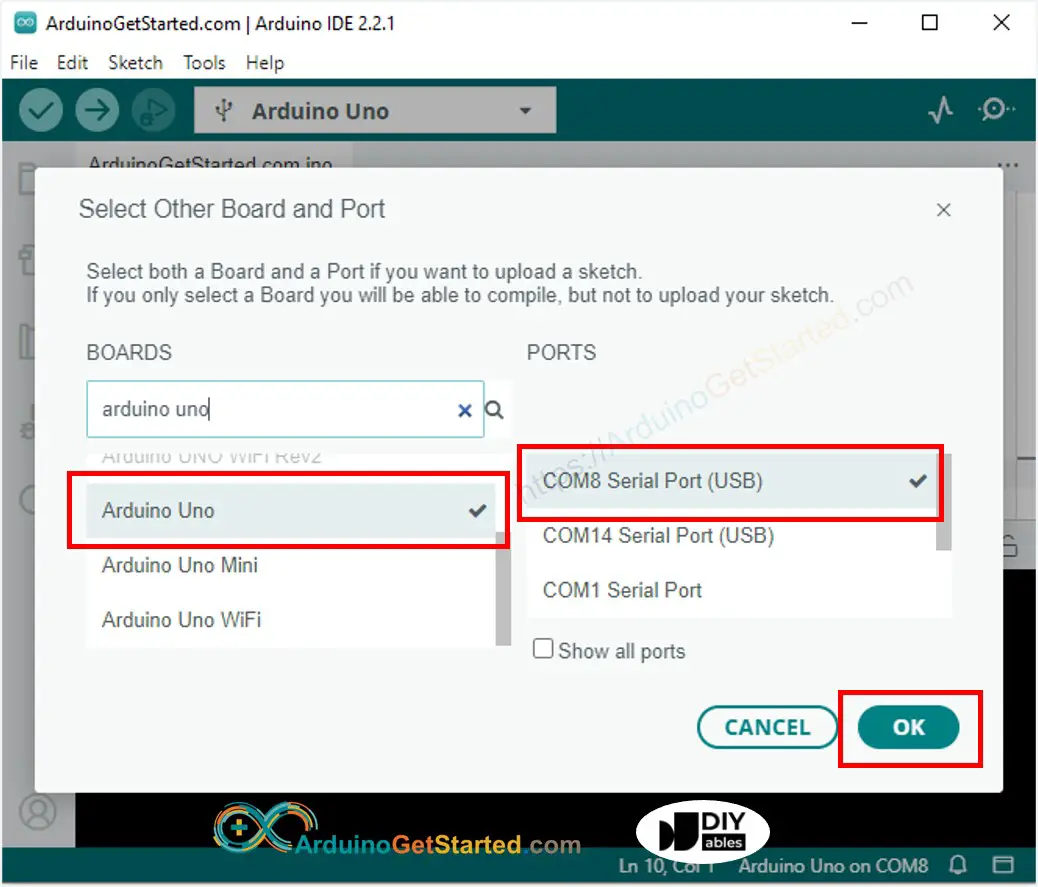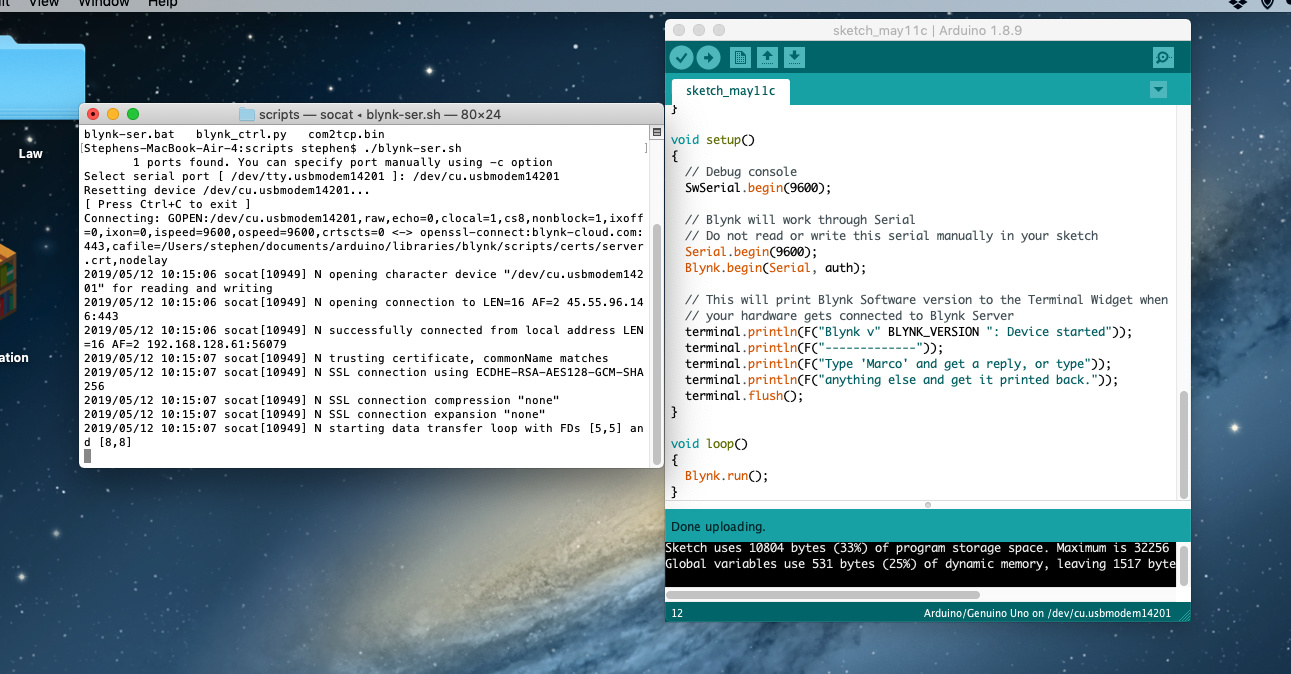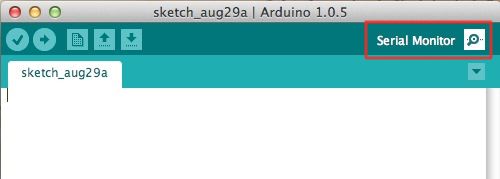
- #Serial terminal program arduino how to#
- #Serial terminal program arduino install#
- #Serial terminal program arduino serial#
- #Serial terminal program arduino full#
#Serial terminal program arduino serial#
In short, serial terminal programs make working with microcontrollers that much simpler. This tutorial is here to help you understand what these terms mean and how they form the larger picture that is serial communication over a terminal. For someone who isn't familiar with these terms and the context in which they are used, they can be confusing at times. These are all words that get thrown around a lot when working with electronics, especially microcontrollers. Like the Original library and example this is under LGPL license.COM ports. PS2Keyboard now requries both pins specified for begin() keyboard.begin(data_pin, irq_pin) įor more information you can read the original wiki in Remember, if it doesn't work, but your keyboard still powers on, try switching the data and IRQ pins. what should happen is once you start typing on the keyboard, the characters you type will show up in the Serial monitor.
#Serial terminal program arduino install#
Now, install the library and upload the code below to your Arduino. If this doesn't work when you upload the code, then switch the wires. Plug in one wire to pin 20, and the other to 21. Now it is up to finding the data pin, and the IRQ pin. If this doesn't work, try doing different combinations until the keyboard is powered. Plug in your keyboard, and the lights should flash once, then go blank again. Grab your red wire and out it in the 5v port. Put the black wire in the GND port of your Arduino (Any one will do), as this is most likely to be ground. I attached some extending wires to make them longer, and so I could plugin them into your Arduino easier. Plug in your Arduino (Not with the Tail attached to it we made in the previous step) and grab your wires.

The colors in mine happen to be Green, Black, Red, and White. You should now see 4 wires, usually varying in colors. Mine I found at the bottom of a cable box, and it converted a PS/2 device to USB. What you will want to do first, is cut the cable from the PS/2 connector. You could very much do this with a USB host shield, but those are a lot more expensive than a PS/2 connector and a PS/2 keyboard you may already have. Now it's time for the input method: a PS/2 keyboard.
#Serial terminal program arduino how to#
Now, I want to show you how to make it, without failing on every other thing you do.
#Serial terminal program arduino full#
Now what I have is a fully functioning terminal with keyboard capabilities, and a full color display. I whipped out my camera, and started building.

I hooked that up, wrote a bit of code, and everything worked perfectly. Nothing would work.Īfter about a week of testing and failing, I remembered I still had a Seeed Studio 2.8" TFT Touch Shield that I got when everything was 80 - 90% off at Radio Shack (From when they were closing my local store). I tried doing things like two Arduino's with IR communication, the Wire library, everything. This I found out is because some sort of internal clock (I may have this information wrong) it uses, and when interrupted with almost any other library won't work, either the TVout or the other library, sometimes neither one. The two libraries, the PS/2 and TVout libraries, wouldn't work together. I had used the TVout library before, so I tried to hook that up. I then started to think about the output. I did some tinkering with some PS/2 connectors, along with some waiting for a PS/2 keyboard to arrive from Amazon, and I got that working.

I wanted to make a sort of terminal, with keyboard input and a type of video output. So I loaded up some demo programs, and decided to go a little bit farther with it. I wanted a way to display information from it.

So I recently got my Seeed Studio Ethernet Shield working, and I thought the SD card function was pretty cool.


 0 kommentar(er)
0 kommentar(er)
